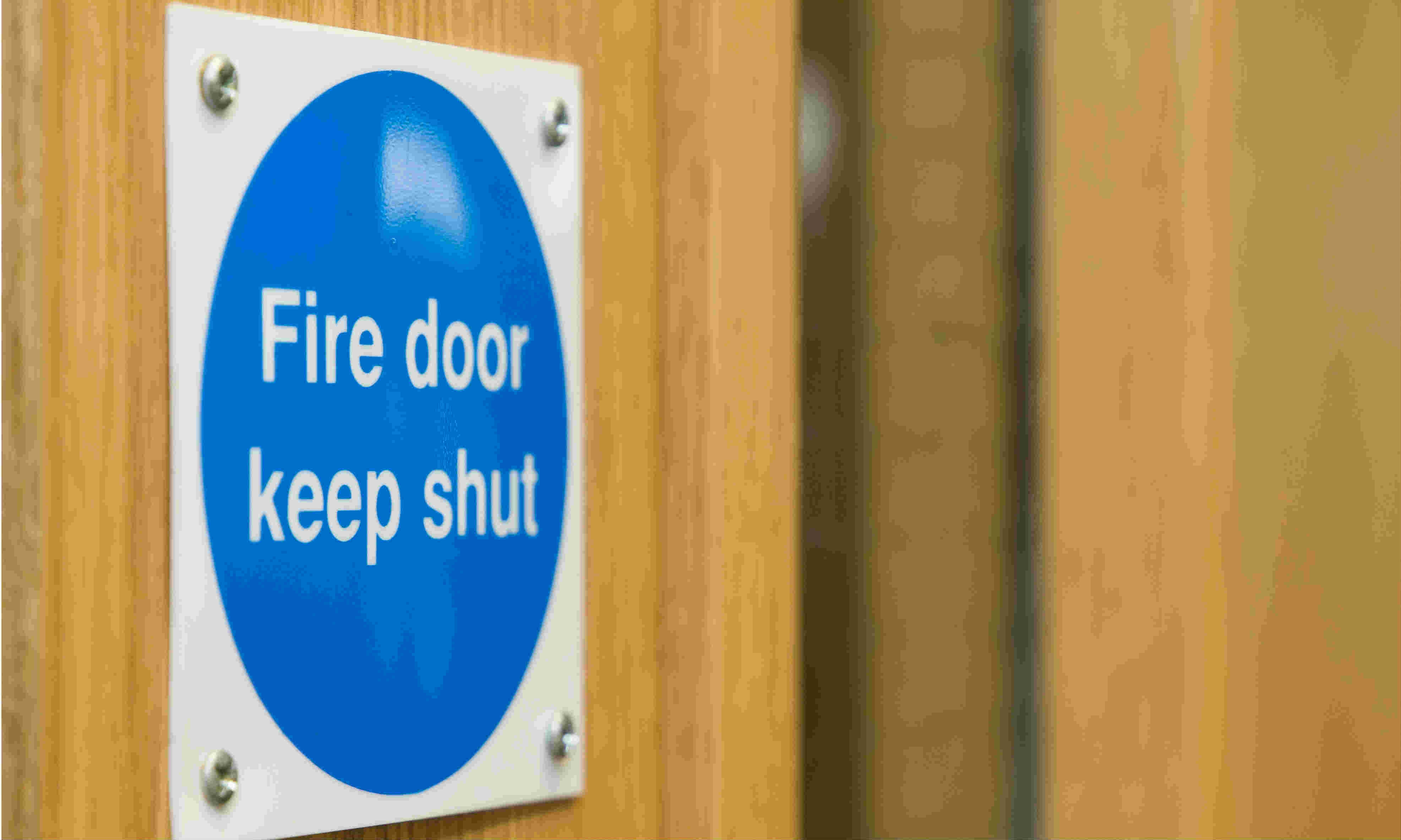Fire Doors: Are Yours Fit For Purpose? Allegion UK’s business development manager Karen Trigg discusses why fire doors are integral to any successful fire safety strategy.
On Monday, September 3rd, the Grenfell Tower Inquiry resumed, which will determine whether urgent fire safety measures need to take place.
Following the ongoing investigation, the building has been dubbed a “culture of non-compliance”, where everything, from the cladding and evacuation plans to fire doors and door closers, was significantly ineffective.
However, as the industry attempts to crackdown on fire safety, it’s clear that the fundamental issues are a lack of a holistic approach and sufficient fire safety knowledge. This not only applies to high-rise buildings, but in all types of government-owned buildings, too.
In order to remedy our failing fire safety measures in the UK, a complete “culture change” is needed. As Dame Judith Hackitt stated in her Independent Review of Building Regulations and Fire Safety: “We need to adopt a very different approach to the regulatory framework covering the design, construction and maintenance of high-rise residential buildings.”
Fire Doors
Fire doors are one of the most common causes of breaching fire safety regulations. Many building owners and users still aren’t aware that propping them open is a breach, or don’t think to close them when one has been spotted open.
Fire doors are crucial to keeping a building’s inhabitants safe in the event of a fire. That’s because they help to compartmentalise fire and smoke, buying precious time during an emergency evacuation and potentially resulting in less damage to the building. In fact, fire doors should only be used as a barrier when closed, and a means of escape when open.
After the Grenfell Tower fire, it was revealed that the fire doors within the building were destroyed after 15 minutes, despite being designed to last 30 minutes. This could have been due to a number of reasons including poor maintenance and fitting, damage and incorrect hardware together with missing smoke strips. The most common types of fire doors are the FD30 and the FD60 types, which can withstand fire and smoke for 30 and 60 minutes respectively. If a fire door fails to withstand a fire for the amount of time it has been designed for, this can result in devastating effects.
When knowledge falls short
When building owners or inhabitants label fire safety requirements as a grey area, this is when standards can slip. There are a number of things to consider when checking if a fire door is operating correctly. These include:
- Checking the door’s certification. This will usually come in the form of a label on the top edge of the door or a colour-coded plug inserted into the jamb.
- Checking the gaps around the top and sides of the door between the frame. These should be no more than 3mm when the door is closed.
- Looking for intumescent seals around the door or frame. These should be intact and free from damage.
- Checking all hinges are firmly fixed with no missing or broken screws.
- Making sure the door closes firmly onto the latch without sticking to the frame or the floor.
Educating yourself or the necessary persons on what’s required is important, as it not only safeguards the building in the event of a fire, but can ultimately save lives, too.
Therefore, if a faulty or damaged fire door is spotted, action should be taken immediately. There are a number of things to do to get the issue rectified or seen-to; these include reporting the issue to the building’s maintenance contractor, speaking to a fire door inspector or contacting the door’s manufacturer, supplier, installer or fit-out company.
If you do suspect that one or more of your fire doors are not compliant, it’s important to seek professional advice right away.
Door closers
Another factor which was detrimental to the level of fire safety during the Grenfell Tower fire was its lack of or damaged door closers. This resulted in “shortcomings in compartmentalisation,” meaning the fire and smoke wasn’t contained for as long a time as it should have been.
Just as integral to an effective fire safety plan is the adequate operation of door closers. If a door closer is faulty or damaged, it may be unable to close a fire door in the event of a fire.
At the same time, it’s necessary to check that door closers allow for free passage. This includes making sure a door opens with ease and closes again safely.
As well as being undamaged and securely fitted, make sure that if the door is unlatched, for example, the door closer holds the door in-line with the frame and the intrumescent seal. Lastly, it should be free from oil leakage.
The common constraints
All fire door equipment and hardware must be correctly specified, installed and maintained in order to perform adequately. This includes carrying out regular risk assessments, too.
After the events of the Grenfell Tower, it’s more important now than ever to ensure that specifications are correct to a building’s requirements and compliant to the relevant codes and regulations.
Particularly in buildings where funding may fall short, it can be difficult to implement high-quality solutions, instead opting for cost-efficiency. Whilst opting for value for your money can seem a highly tempting route to take, the finer details can be overlooked and more worryngly, quality and function can be compromised.
If you’re unsure on the solutions or products available, or even how to implement an effective fire safety strategy around the constraints of budget, speaking to experts can help guide you in the right direction.


